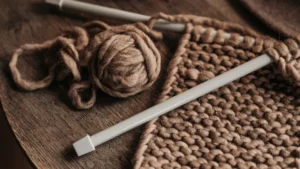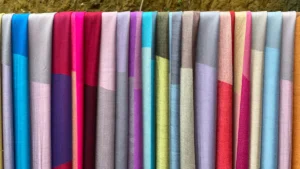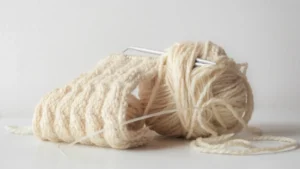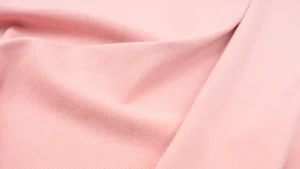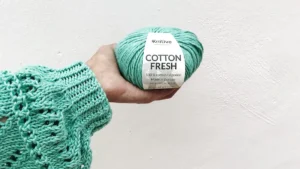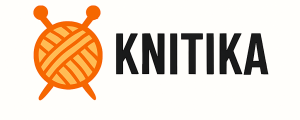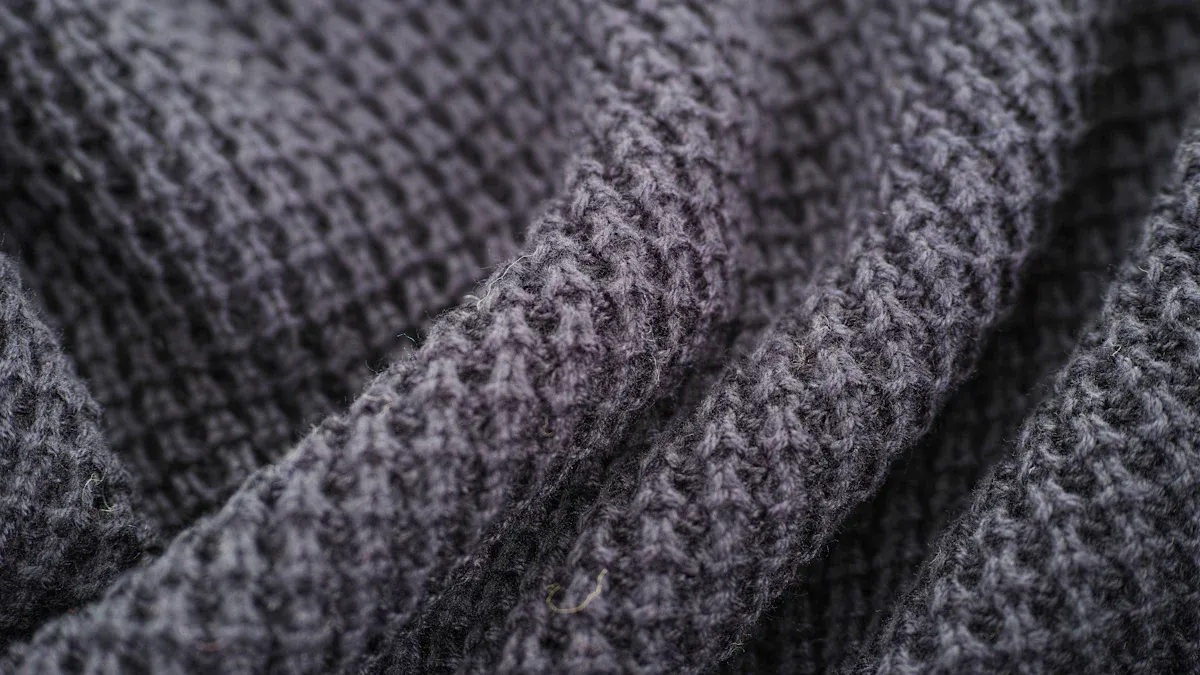
You need to know the key differences between a knit tech pack and a woven tech pack because fabric construction changes everything. Knit fabrics stretch and move, so you must include details about stretch, recovery, and stitch types. Woven fabrics do not stretch much. You must focus on grainline, weave type, and weight. If you do not specify whether your fabric is knit or woven, you risk problems with sewing, fit, and durability. Choosing the right details for knit or woven fabrics helps you get the best results.
Key Takeaways
Knit and woven fabrics are not the same. They have different stretch, structure, and care needs. Your tech pack should fit the fabric type. Knit tech packs talk about stretch and how the fabric goes back to shape. They also cover stitch types and finishing for comfort and fit. Woven tech packs focus on weave type and grainline. They also talk about fabric weight and finishing for shape and strength. Clear and detailed tech packs stop mistakes. They save time and help factories make your clothes right. Use flat sketches and exact measurements. Add clear labels to show your design and sewing needs. Talk well with your factory and give regular updates. This keeps production smooth and lowers mistakes. Tech pack templates can help you work faster. But always change them for knit or woven fabrics. Picking the right tech pack gives better quality. It also means fewer problems and faster production.
Tech Pack Basics
Definition
A tech pack is a special document for making clothes. It helps you share your design ideas with the people who make your clothes. The tech pack works like a plan or map. It has all the important details needed to create your product. When you make a tech pack, everyone can see what you want. This helps stop mistakes and saves time when making clothes. You can think of a tech pack as a guide from your idea to the finished clothing.
Core Parts
A full tech pack has many important sections. Each section gives clear steps to the manufacturer. Here are the main parts you should add:
Product Overview: Tell what your product is, why it is made, and who will wear it.
Technical Drawings: Put in flat sketches that show the front and back. Add details about how to put it together, what seams to use, and how to finish it.
Material Specifications: List all fabrics, trims, and extras. Give details like what the fabric is made of, how heavy it is, what it feels like, and color codes.
Measurements: Give size charts, main measurements, and rules for different sizes. Set limits for how much sizes can change.
Bill of Materials: Write down every part, like fabrics, buttons, zippers, and labels.
Packaging and Labeling: Say how to fold, label, and pack the clothing.
Quality Control: Explain how to test and check the garment to make sure it is good.
Tip: Always use clear pictures and easy instructions. These help the manufacturer see your design and how to make it.
Role in Apparel
You use tech packs to talk with manufacturers. A tech pack gives them all the details to make your clothes right. This document stops confusion and helps avoid big mistakes. When you use a tech pack, your product turns out just how you want.
How It Influences Communication Between Designers and Manufacturers | |
|---|---|
Detailed Specifications | You give exact materials, colors, sizes, and how to make it. This helps stop mix-ups and mistakes. |
Visual Aids | You add sketches and diagrams to show your ideas and how to build the garment. |
Organization | You put information in order, so it is easy to find and less confusing. |
Digital Formats | You can work together online and change details fast, which makes production quicker and more correct. |
Review and Revision | You check your tech pack before sending it, so nothing is missing and everyone understands. |
When you use a tech pack, you make the design and production steps easier. You help keep things the same in every batch and at every factory. Tech packs also help the planet by cutting waste and making choices faster. If you want your clothes to look and fit right, always begin with a good tech pack.
Fabric Types
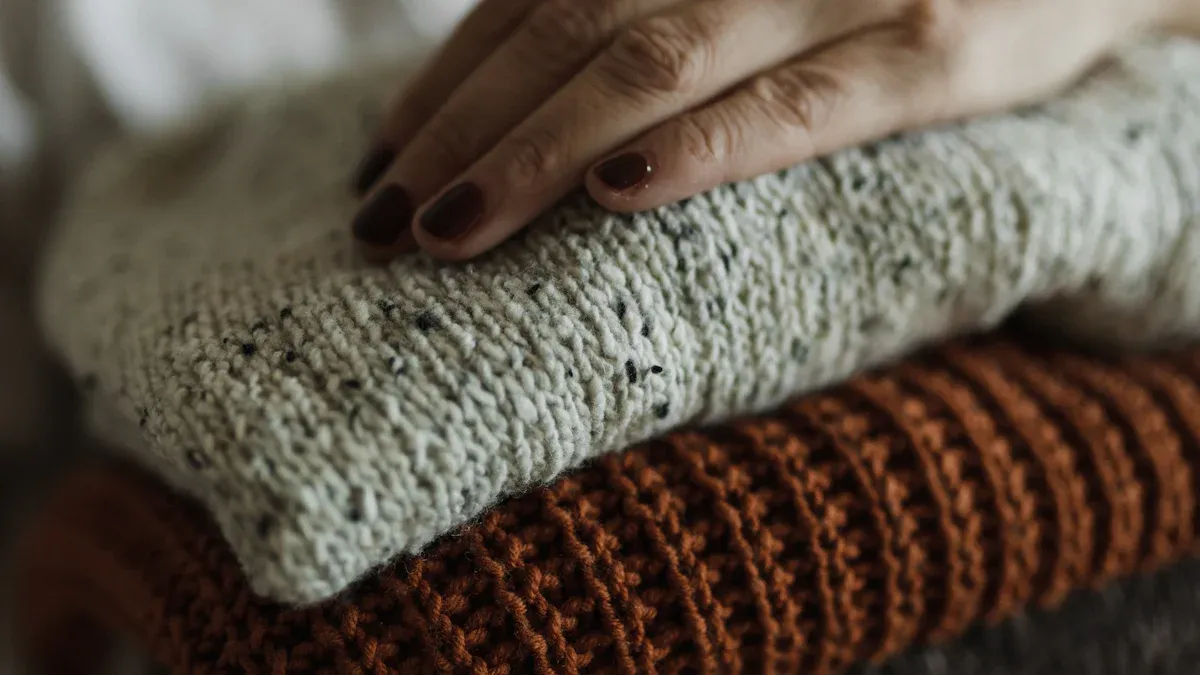
Knit Fabrics
Knit fabrics are in many clothes you wear. These fabrics are made by looping yarn together. This makes the fabric soft and stretchy. Knit fabrics can bend and move easily. They feel comfortable and stretch in many ways. That is why people use them for activewear, t-shirts, and leggings.
Here are some types of knit fabrics and what makes them special:
Interlock Knit: This fabric is thick and does not move much. It works well for pants and tank tops.
French Terry: One side has loops, and the other side is smooth. It soaks up sweat.
Fleece Knit: This fabric is warm and stretches. It dries fast and is used for sweatshirts.
Purl Knit: It is thick and bends a lot. People use it for sweaters.
Raschel Knit: This fabric can look like lace or have patterns. It is used for many kinds of clothes.
Tricot Knit: It feels smooth and soft. It does not wrinkle and is used for dresses and lingerie.
Milanese Knit: This fabric is silky and light. It is good for gloves.
Cable Knit: It is thick and has cable designs. You find it in sweaters.
Jacquard Knit: This fabric is strong and has fancy patterns. It is used for skirts and jackets.
You can check this table for more information:
Knit Fabric Type | Defining Characteristics | Typical Uses |
|---|---|---|
Single Jersey | Soft, lets air in, stretches, light | T-shirts, casual clothes |
Rib Knit | Has lines going up and down, fits tight, keeps its shape | Cuffs, necklines, sweaters |
Interlock Knit | Double knit, smooth, does not curl much | Dresses, sportswear |
Purl Knit | Thick, bends easily, has two sides | Sweaters, kids’ clothes |
Cable Knit | Thick, bumpy, warm | Sweaters, cardigans |
Jacquard Knit | Fancy patterns, strong | Skirts, dresses, jackets |
Tricot Knit | Smooth, soft, does not wrinkle | Lingerie, dresses |
Raschel Knit | Looks like lace or has patterns, can stretch | Lace, chenille fabrics |
Milanese Knit | Silky, light, hangs well | Gloves |
Fleece Knit | Thick, warm, stretches | Sports clothes, jackets |
Note: Knit fabrics stretch more than woven fabrics. This stretch makes them comfy and easy to move in.
Woven Fabrics
Woven fabrics are made in a different way. Yarns go over and under each other in a pattern. Woven fabrics are strong and last a long time. They do not stretch much, so they keep their shape. You see woven fabrics in jeans, jackets, shirts, and uniforms.
Some things about woven fabrics are:
They do not wear out fast.
They do not stretch much, mostly across.
They keep their shape and size.
They wrinkle easily and need ironing.
You pick woven fabrics when you want clothes to look neat and hold their shape. These fabrics are best for things like blazers or pants.
Main Differences
It is important to know how woven and knit textile types are not the same. The way each fabric is made changes how you design, sew, and finish your clothes.
Here is a table to help you see the differences:
Aspect | Woven Fabrics | Knit Fabrics |
|---|---|---|
Construction | Fibers cross over and under each other | Yarn loops link together in a chain |
Stretch | Does not stretch much | Stretches a lot in many ways |
Durability | Strong and keeps its shape | Can droop or lose shape after a while |
Typical Uses | Jeans, jackets, shirts | T-shirts, leggings, sports clothes |
Elasticity | Stretches very little | Stretches a lot |
Shape Retention | Keeps its shape | Can shrink or get bigger |
Moisture Absorption | Does not soak up much water | Soaks up more water |
Creasing | Gets wrinkled easily | Does not wrinkle much |
Production Cost | Costs more to make | Costs less to make |
You can see that woven and knit textile types act differently. Knit fabrics are soft and stretch, while woven fabrics are strong and keep their shape. When you pick a fabric, think about how it will act and what you want your clothes to do.
Knit Tech Pack Essentials
When you create a knit tech pack, you need to focus on the unique properties and characteristics of knit fabrics. Knit fabrics stretch, recover, and behave differently from woven fabrics. Your tech pack must show these differences clearly so manufacturers can make your garment correctly.
Key Elements
Stretch Specs
You must include stretch specifications in your knit tech pack. Knit fabrics can stretch in one or more directions. You should measure how much the fabric stretches and returns to its original shape. Write down the percentage of stretch for both width and length. For example, a t-shirt might need 30% stretch across the chest. If you skip this step, your garment may not fit as planned.
Stitch Types
Knit fabrics use special stitch types. You need to specify which stitches to use for each part of the garment. Common stitches for knit include overlock, coverstitch, and flatlock. Each stitch has different characteristics. Overlock stitches help seams stretch with the fabric. Coverstitch is good for hems. Flatlock creates smooth seams that do not rub the skin. Always label these clearly in your knit tech pack.
Recovery
Recovery means how well the knit fabric returns to its shape after stretching. Some knits bounce back quickly, while others stay stretched out. You should test and record the recovery rate. This helps prevent sagging or baggy areas in your finished garment. Good recovery is important for activewear and fitted clothes.
Finishing
Finishing details matter in a knit tech pack. You need to describe how to finish edges, hems, and seams. Knit fabrics can unravel if not finished well. You might use binding, serging, or folded hems. Always show these finishes in your sketches and notes.
Common Issues
You may face some common problems when working with knit tech packs:
Missing or unclear stretch specs can lead to poor fit.
Not labeling stitch types may cause the wrong seams.
Ignoring recovery can result in baggy or misshapen garments.
Skipping finishing details may cause unraveling or weak seams.
Tip: Always double-check your knit tech pack for these issues before sending it to the factory.
Best Practices
Industry experts recommend several best practices for creating an accurate knit tech pack:
Draw flat sketches that show the correct scale, stitch details, and garment proportions. This helps everyone understand the knit construction.
Use clear labels and symbols for each part, fabric, trim, and stitch type.
Measure every garment part carefully and use the same units throughout. Record measurements with set tolerances.
Write a full specification sheet. Include the garment title, style number, revision info, size ranges, measurement points, tolerances, colorways, and a legend for symbols.
Review your tech pack before sending it. Check sketches, measurements, colors, materials, and instructions. Get feedback from your team or client.
Save sketches in true scale and keep real-size versions for quick checks.
Use PDFs and printouts to review your knit tech pack before production.
You should also show the reading direction of any label text with arrows. Always clarify front and back views in your sketches. Drawing in true scale helps you check measurements and placements, which reduces errors.
By following these steps, you make sure your knit tech pack covers all the important properties and characteristics of knit fabrics. This leads to better quality and fewer mistakes in production.
Woven Tech Pack Essentials
When you make a woven tech pack, you must think about woven fabric traits. Woven fabrics have special features. These features change how you design, cut, and sew clothes. If you pay attention to these things, you can stop mistakes and get good results.
Key Elements
Weave Type
You always need to say the weave type in your woven tech pack. The weave type shows how yarns cross each other. Some common weave types are plain, twill, and satin. Each weave gives the fabric different strengths. Twill weaves make fabric strong, so they work for jeans. Satin weaves feel smooth and look shiny. When you tell the factory the weave type, they know how to make your garment.
Weight
Fabric weight changes how clothes feel and move. You should write the fabric weight in GSM or ounces per yard. Light weights are good for shirts and blouses. Heavy weights are better for jackets and pants. Always put the weight in your tech pack so the factory knows what to use.
Grainline
Grainline is very important for woven fabrics. It shows which way the yarns go. You must mark the grainline on your patterns. If you cut the fabric the wrong way, the clothes may twist or not fit. Always draw grainline arrows on your drawings and pattern pieces.
Finishing
Finishing means how you treat the edges and seams. You can use serging, binding, or hemming. Good finishing stops the fabric from fraying. It also helps the garment last longer. In your woven tech pack, show finishing methods with notes and sketches.
Common Issues
You might have some problems when making woven tech packs. Here are some common ones:
If you hire a fashion designer, you may miss technical details.
Using too many tech pack designers can cause confusion.
Not making clear agreements at the start can lead to mix-ups.
Spending too little time with your tech pack creator means more changes later.
Spending too much time on tech packs can slow down your project.
Not tracking changes can cause problems and delays.
Tip: Make a good plan and talk clearly to avoid these problems.
Best Practices
Experts say to follow some best practices for woven tech packs. First, pick your fabric carefully. Look at weight, fiber, width, stretch, drape, and care. Get fabric samples and data sheets that show fiber, yarn count, weave, and finish. Say what weave or print pattern you want to stop confusion.
You should also make patterns that match woven fabric traits. Make samples to check your design. Write down every detail, like measurements, materials, and notes. Check your tech pack before you send it to the factory.
Here is a table of best practice categories:
Best Practice Category | Details |
|---|---|
Technical Drawings | Add front, back, and close-up views with all sizes. |
Points of Measure (POMs) | Use standard codes, target sizes, and fit rules. |
Material Specifications | List fabric types, color codes, trims, and other details. |
Construction Notes | Write down stitching types, seam finishes, and allowances. |
Branding Elements | Show logo, print, and label placement and size. |
Packaging Requirements | Give instructions for packaging and presentation. |
Revision Log | Track changes to keep everyone updated. |
Communication with Manufacturers | Set clear contacts, use online tools, and plan updates to stop mistakes. |
If you follow these steps, your woven tech pack will cover all the important parts and help make good clothes.
Knit vs Woven Tech Pack Comparison
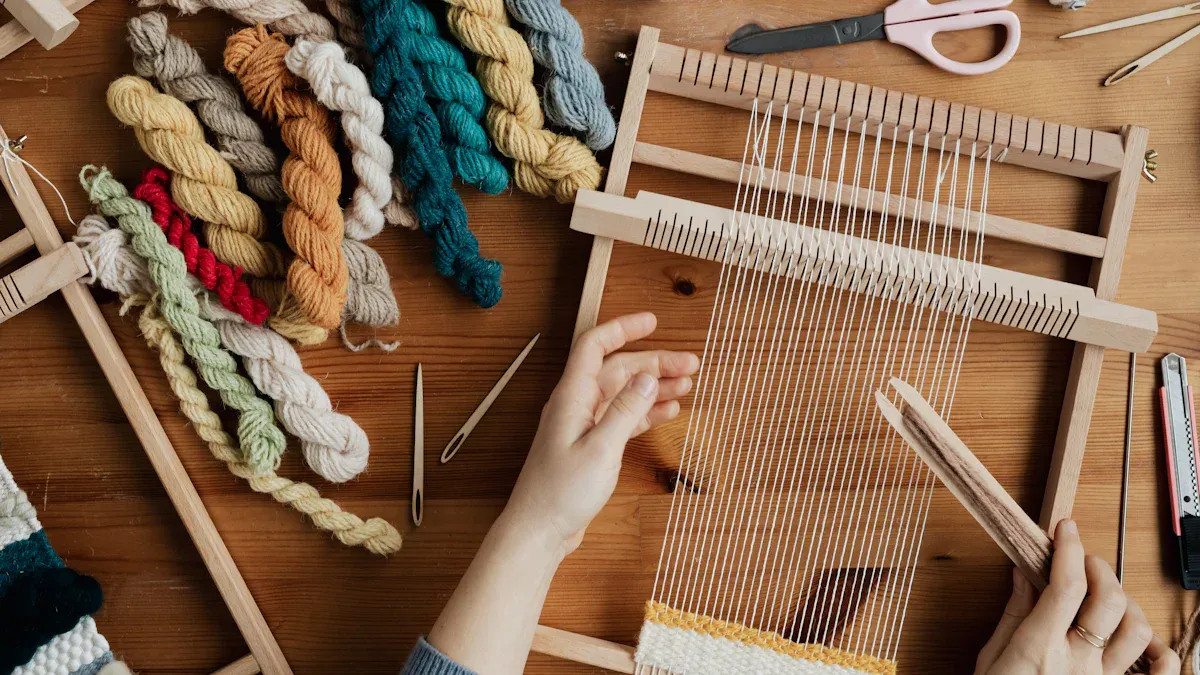
Side-by-Side Table
You can see the main differences between knit and woven tech packs in the table below. This table helps you compare the structure, required details, and how each type affects manufacturing.
Feature | Knit Tech Pack | Woven Tech Pack |
|---|---|---|
Fabric Structure | Looped yarns, stretches easily | Yarns cross over and under, holds shape |
Key Specs | Stretch %, recovery, stitch type, finishing | Weave type, grainline, weight, finishing |
Stitching | Overlock, coverstitch, flatlock | Plain seam, lockstitch, French seam |
Fit Considerations | Needs stretch and recovery details | Needs grainline and stability details |
Common Issues | Sagging, poor recovery, unraveling | Fraying, twisting, wrinkling |
Machinery | Overlock/serger machines | Lockstitch, straight stitch machines |
Production Speed | Often faster due to multi-step machines | Can be slower, needs precise seam allowances |
Garment Types | T-shirts, leggings, sportswear | Shirts, jeans, jackets, uniforms |
Finishing | Serged, bound, folded hems | Hemmed, bound, serged edges |
Note: You must match the tech pack details to the fabric type. This helps you avoid mistakes and get the right fit and finish.
Impact on Production
Your choice between knit and woven tech packs changes how you make clothes. Each fabric type needs different machines, skills, and steps.
Knit fabrics need seams and stitches that stretch. You use overlock or coverstitch machines for these. These machines can sew, trim, and finish edges at the same time. This makes production faster and can lower costs.
Woven fabrics use stable seams like plain seams and lockstitches. These seams do not stretch. You need to sew them carefully and use exact seam allowances. This can slow down production but gives strong, neat seams.
You must pick the right stitch and seam for each fabric. If you use the wrong one, the garment may break or not fit well.
Clear tech packs with step-by-step instructions help factories work faster. They also reduce mistakes and rework. This saves you time and money.
Specialized machines for knits can speed up work, but you need skilled workers to run them. Woven garments may take longer because you need to sew with care and check the grainline.
Design choices that fit the fabric make assembly easier. If you plan for the right machines and steps, you can cut down on time and cost.
Tip: Always check your tech pack for clear sewing and finishing instructions. This helps you get the best results in less time.
When to Use Each
You should choose a knit tech pack or a woven tech pack based on your garment’s needs.
Use a knit tech pack when you design clothes that need to stretch and move. These include t-shirts, leggings, activewear, and underwear. Knit fabrics work best for comfort and flexibility.
Use a woven tech pack for garments that need to keep their shape. These include shirts, jeans, jackets, and uniforms. Woven fabrics give structure and a crisp look.
If you want a garment that fits close to the body and moves with you, pick knit. If you want a garment that looks sharp and holds its form, pick woven.
Always match your tech pack to the fabric. This helps you avoid problems with sewing, fit, and durability.
Remember: The right tech pack for your fabric type leads to better quality, fewer mistakes, and faster production.
You can see that the choice between woven and knit textile types shapes every step of your design and manufacturing process. When you understand these differences, you can make better decisions and create garments that meet your goals.
Best Practices
General Tips
You can make your tech packs better by using easy steps. Good communication helps you stop mistakes and delays. Always show which way labels and words should go. Mark the front and back on your drawings. Give Pantone and thread colors early to stop color mistakes. Keep your notes short and simple to read. Organize your tech pack so you do not repeat things. Put the style number, garment name, and fabric on each page. Number every page so factories do not lose them. Use a cover page with revision notes and history. Send samples to show your design ideas. Tell the factory about problems before making starts. Update your tech pack if the factory has questions. Use Points of Measure diagrams with clear names. Color code stitch types and explain interfacing needs.
Tip: Always check your tech pack for missing or unclear details before sending it to the manufacturer.
Knit Tech Pack Tips
When you work with knit clothes, focus on stretch, fit, and strength. Use stitches that stretch, like chainstitch or overedge, so seams do not break. Always write the stitch type in your tech pack. For example, say if you want a lockstitch or coverstitch. Set stitches per inch to balance seam strength and stretch. Write the seam allowance width to keep fit the same. Pick the right thread type, size, and color. Use standard color systems for thread colors when you can.
Give exact spots for hems, pockets, and labels. Reinforce stitches in high-stress spots, like armholes or crotch seams, to make clothes last longer. Draw clear sketches with notes for seam types and stitch spots. Add photos of samples or similar clothes to show finishes and details. Use standard words and numbers to stop confusion. Always check that the factory understands your instructions before making starts. Review the first samples closely to make sure they match your tech pack.
Care instructions are important for knit clothes. Tell the factory how to wash, dry, and iron the fabric. Use seam types that stop unraveling, like serged or bound edges. Watch for common problems, like knitting tension errors, color mismatches, or missed loops. Train your team to find defects early. Keep records of any changes or problems during making.
Woven Tech Pack Tips
For woven clothes, focus on structure and keeping shape. Use strong lockstitches that do not stretch. Choose plain seams with pressed open edges for a neat look. Set the stitch density for strength and a clean finish. Write the seam allowance for stable fabric edges. Pick thread types and colors that match the fabric and design.
Aspect | Knit Fabrics | Woven Fabrics |
|---|---|---|
Stitch Type | Lockstitch, plain seam | |
Seam Type | Overlocked, serged | Plain seam, pressed open |
Stitch Density (SPI) | Balances stretch and strength | Focuses on strength and appearance |
Seam Allowance | Adjusted for stretch | Set for stable edges |
Thread Details | Durable, color-matched | Durable, color-matched |
Always add care instructions for woven clothes. Tell the factory if the fabric needs special washing or ironing. Mark the grainline on all pattern pieces to stop twisting. Watch for fraying edges and use the right finishing, like serging or binding. Check for common problems, like uneven sizes or fit issues. Test fit on mannequins and change as needed. Keep your tech pack updated with any changes during making.
Note: A clear and organized tech pack helps you stop costly mistakes and keeps your production on track.
Mistakes to Avoid
Overlooking Fabric Details
You need to pay attention to fabric details in your tech pack. If you do not say if your garment uses knit or woven fabric, you can have big problems. Knit fabrics stretch and need special stitches. Woven fabrics do not stretch much and need other seams. If you mix these up, your clothes might not fit or could fall apart after washing. Always write the fabric type, weight, and any special finishes. Double-check that your tech pack matches the fabric you want. This helps you avoid mistakes and keeps your production on track.
Tip: Add fabric swatches or photos to your tech pack. This helps the factory know what you want.
Incomplete Specs
If your tech pack is missing important details, you can have trouble. When you leave out things, the factory may guess or pick the wrong option. This can cause mistakes and slow down your order. Experts say unclear or missing info in tech packs is a big reason for errors and extra costs. Always include full measurements, stitch types, seam allowances, and finishing instructions. For knit garments, remember to add stretch and recovery details. If you skip these, your clothes may not turn out right.
A clear and complete tech pack saves time and money. It also helps you build trust with your manufacturer.
Poor Communication
Bad communication with your manufacturer can ruin your project. Many problems start because people do not talk clearly. Here are some common issues:
Not sharing tech pack changes during production
Leaving out important info in messages
Language problems
Not writing down small changes to materials, sizes, or how to make things
Giving only spoken instructions without a detailed tech pack, which causes confusion
Messy or hard-to-find message threads
Not enough updates or clear info in tech packs
Not talking enough at the start between designers and manufacturers
You should keep your messages clear and easy to find. Use written instructions instead of just talking. Update your tech pack every time you make a change. For knit garments, always explain stretch and stitch details in writing. Good communication helps everyone work together and makes fewer mistakes.
Note: Set up regular check-ins with your factory. This helps you find problems early and keeps your project moving.
Choosing the Right Tech Pack
Assessing Fabric Needs
First, think about what your garment needs. The tech pack you use depends on the fabric you pick. Each fabric has special features that change how clothes look and feel. Knit and woven fabrics are very different. Knit fabrics stretch a lot and feel soft. Woven fabrics do not stretch much and feel firm. These differences also affect how long your clothes last. Look at the table below to help you choose the best fabric for your design:
Criterion | Knit Fabric Characteristics | Woven Fabric Characteristics |
|---|---|---|
Structure | Made by interlooping yarns | Made by interlacing threads at right angles |
Stretchability | Naturally stretchy in all directions (25-40% more) | Limited stretch unless elastic fibers are added |
Texture | Soft and flexible | Stiffer and more structured |
Durability | Can snag or lose shape over time | More durable and holds shape longer |
Breathability | Often more breathable due to looped structure | May be less breathable depending on weave type |
Wrinkle Resistance | More wrinkle-resistant | Tends to wrinkle more easily |
Edge Behavior | Does not fray when cut | Frays when cut unless edges are finished |
Weight | Generally lightweight | Can range from light to heavy depending on weave |
Pick a fabric that matches your garment style. For example, use knit fabric for t-shirts because it stretches and feels nice. Use woven fabric for shirts or blazers because it keeps its shape and looks neat. This helps your tech pack tell the factory how to make clothes that fit and work well.
Working with Factories
Clear tech packs help factories know what you want. Talk with the factory about fabric, style, and any special needs. Share your tech pack early so the team can ask questions. This helps stop mistakes before they happen. Factories use your tech pack to pick the right machines and stitches. If you use knit fabric, they need machines for stretch. For woven fabric, they use machines for strong seams.
Send fabric swatches or photos with your tech pack. This shows the factory the color, texture, and weight you want. Always check samples before making lots of clothes. Give feedback and update your tech pack if you change anything. Good teamwork with the factory makes better clothes and fewer problems.
Tip: Have regular meetings or calls with your factory. This helps everyone stay on track and fix problems fast.
Using Templates
Tech pack templates help you work faster and easier. You can use templates in programs like Microsoft Excel. Templates save time because you do not have to write everything yourself. Here are some good things about using tech pack templates:
Templates do size grading for you when you add measurements.
You can change templates for different clothes, like knit or woven.
Linked headers stop you from typing style info again and again.
Templates have flat sketches, detail notes, and costing sheets.
Costing sheets help you find out costs and prices with formulas.
You can email templates to your team for easy sharing.
Templates work for men’s, women’s, and kids’ clothes.
Size grade sheets fit both knit and woven garments.
Templates help you stay neat and make fewer mistakes. You can focus on design while the template does the math and layout. Always check your template before sending it to the factory to make sure everything is right.
Knit and woven tech packs are not the same. This is because their fabric structure, stretch, and finishing are different. Knit fabrics can stretch and let air through. Woven fabrics are strong and keep their shape. You should always match your instructions to the fabric you use. Give the right measurements for each fabric. Add simple notes about stitching and how to put the garment together.
Work with your team to get better results. Use pictures and diagrams to help everyone understand. Change your tech pack when your design changes.
If you want to know more, look for classes that teach about picking fabrics, stitch types, and making tech packs for both knit and woven clothes.
FAQ
What is the main difference between a knit and a woven tech pack?
You use a knit tech pack for stretchy fabrics and a woven tech pack for stable fabrics. Knit tech packs focus on stretch and recovery. Woven tech packs focus on grainline and weave type.
Why do I need to specify fabric type in my tech pack?
You must tell the factory if your fabric is knit or woven. This helps them choose the right machines, stitches, and finishing. If you skip this, your garment may not fit or last.
Can I use the same tech pack template for both knit and woven garments?
You should not use the same template. Knit and woven fabrics need different details. For example, knit tech packs need stretch specs. Woven tech packs need grainline and weave type.
What happens if I forget to include stretch specs for a knit garment?
If you leave out stretch specs, your garment may fit wrong or lose shape. Factories need this information to sew and finish the garment correctly.
How do I show finishing details in my tech pack?
You can use sketches, photos, or notes. Mark seam types, edge finishes, and label placements. Clear visuals help the factory understand your instructions.
Do I need to include care instructions in my tech pack?
Yes, you should always add care instructions. This helps the factory choose the right materials and finishing. It also helps your customers care for the garment.
What is the best way to communicate changes to my tech pack?
You should update your tech pack and send the new version to the factory. Use clear notes or a revision log. Regular updates help everyone stay on track.
How can I avoid common mistakes in tech packs?
Check your tech pack for missing details. Use clear language and visuals. Talk with your factory often. Keep a record of all changes. This helps you avoid costly errors.



